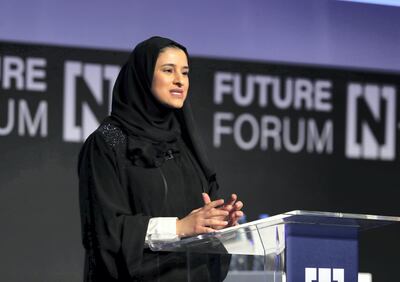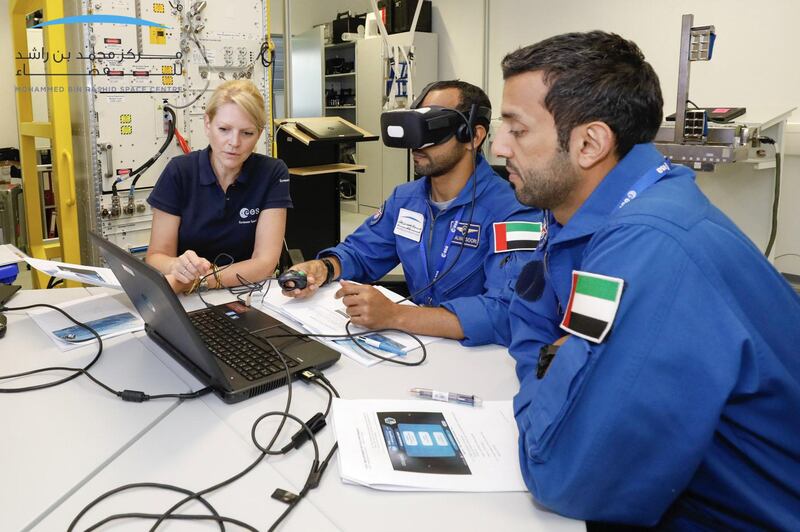In the next 50 years, up to one million people could be living on Mars, Elon Musk claimed last month. Mr Musk is a technology entrepreneur who founded SpaceX in 2002 to revoluntionise space technology so that people can one day live on other planets. But he is not alone in suggesting that human beings will be able to form societies in space within our lifetimes. Takeshi Hakamada, the chief executive of Japanese firm iSpace – a company that develops lunar robotic modules with the goal of mining the moon – believes that by 2040, there will be a community of at least 1,000 people living and working on the moon.
Those kinds of numbers make you sit up and pay attention, especially when you realise that only 564 people have been to space thus far. And even more startling is the fact that only 65 of them have been women, a paltry 11.5 per cent. This gender imbalance is common wherever space is involved. For example, the majority of Nasa's employees are male – 66 per cent – and among those, women only hold 14 per cent of senior positions.
There are exceptions, of course. The UAE space programme is overseen by a woman – Sarah Al Amiri, who is the Minister of State for Advanced Sciences – and involves many notable women.
More countries should take note of the UAE's lead because, if we are going to have a realistic chance of creating societies on other planets, we need to bring more gender balance. And this needs to happen urgently.

This is not about ticking diversity check-boxes. Although we do need to get beyond the notion that it is all about giant leaps for mankind, this is a far more existential issue about how we structure healthy communities in the future.
It will not happen by accident. Human beings are not suddenly going to play fair in space. Sexism will not evaporate as we pass through the earth’s outer orbit. And the effects of patriarchy have every chance of survival in zero gravity. If anything, we are set to take all the mistakes we have made on earth with us. And in the rarefied, controlled circumstances of space they will be magnified.
The problem is, we have already started to inject sexism into our quest for multi-planetary living without even realising it.
So far, male bodies are the norm by which our planning for space has been conducted and female bodies the ab-norm, from spacesuit sizing, to the width between ladder rungs, to the size of hand drills and much more.
Take the case of the cooling system that helps reduce sweat inside a space suit. Men and women have different physiological patterns when it comes to perspiring. But the system is designed only for the way men’s bodies work. Toilets, too, are designed for men’s use. Women’s bodies respond differently to space radiation but we have little data about its impact on fertility, hormonal cycles and reproduction.

Without women’s involvement, these design errors – dating as far back as the 1950s – will only spread to other aspects of space travel planning.
Aside from hardware design, have we thought about the values and ideas we will need to ensure that we build healthy societies? In many ways, that is far more important for long-term survival. Yet it is treated as an after-thought – if thought of at all.
Take the case of the First Lady Astronaut Trainees, a group of American women who trained to go to space in 1959 but whose missions were terminated before they got off the ground. The programme organiser, Dr William Randolph Lovelace, wanted women in space not for reasons of gender equality but because he felt male astronauts would need nurses and secretaries – jobs traditionally held by women. This was despite the acknowledgement that sending typically smaller-bodied female astronauts made more sense because they would be a lighter load and consume less food. But they sent the men anyway.
There are also examples of of sexism at the workplace. Consider Judith Lapierre, a Canadian astronaut candidate who arrived at a simulation of the International Space Station in Moscow to enact a mission to Mars and see the effects of close proximity. There were four men and Ms Lapierre. In less than a month since the programme got under way, she was sexually assaulted by the captain. It was only 10 days later that leaders of the study took her safety seriously and agreed to install locks. Worse, she had been told not to complain about the assault as this would be considered taboo by the host country.
The fact is women are already facing the same problems in space missions as on earth, whether it is in stereotypes, inappropriate technology, or fundamental disregard of safety, well-being, physical and mental health. Unless we act urgently, it is all coming with us as we journey through the galaxy.
The book Men Are from Mars, Women Are from Venus, written by John Gray and published in 1992, captured people's imagination for, among other things, its title. The idea is that men and women are so different in many ways that, metaphorically speaking, they live on different planets. But we seem to have taken this title too literally by building our aspiration for space travel and extra-terrestrial human existence around male bodies, attitudes and privilege.
Very soon, however, women will also be from Mars. And if we do not address the biases that seem to have been injected into our space plans, it will not be just the women who suffer. It will lead to a failure of the project for multi-planetary living.
So as we cross the final frontier, let us ensure we take the opportunity to leave behind some of humankind's problematic attitudes, one of them being misogyny.
Shelina Janmohamed is the author of Love in a Headscarf and Generation M: Young Muslims Changing the World






